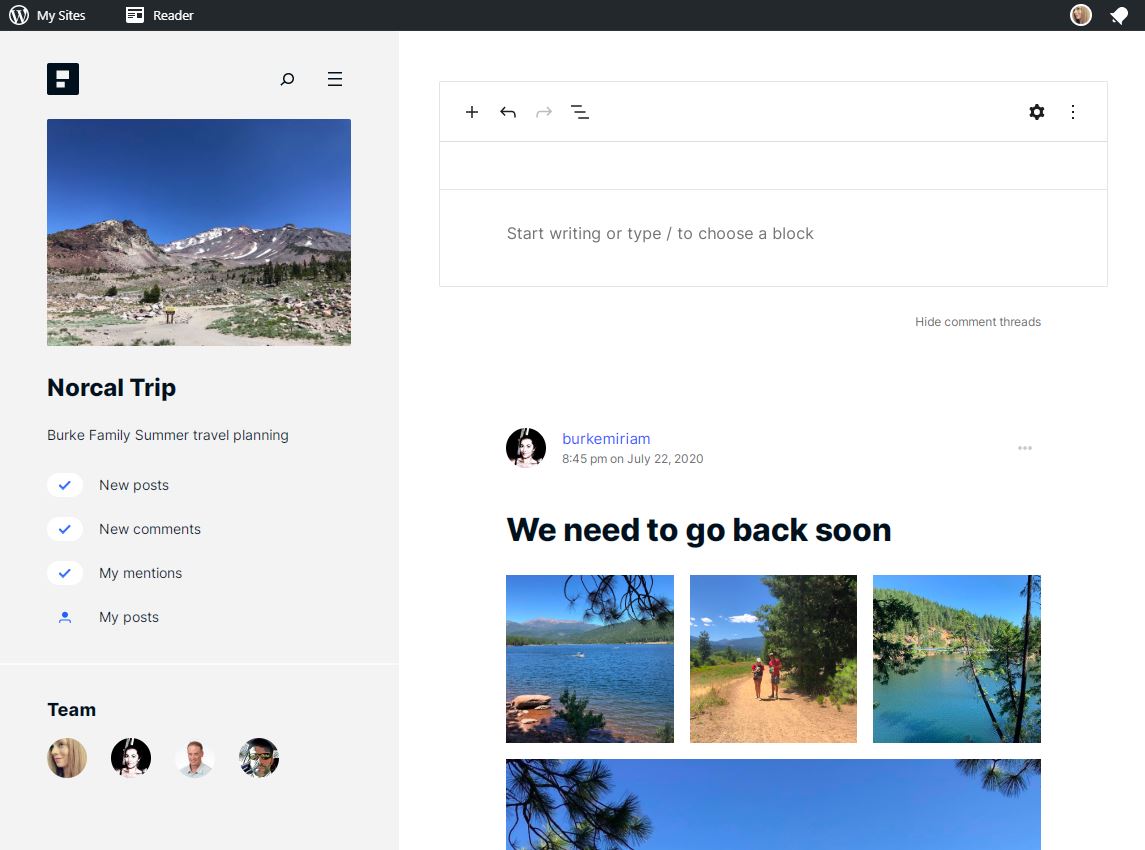Automattic Relaunches P2, Self-Hosted Version on the Roadmap
관련 글: 착한가격 맞나요? 그린핑거 로션 추천 10
Automattic’s relaunch of P2 is now in Beta. This is the long-awaited update to the company’s internal collaboration software that is also used on WordPress.org and other self-hosted sites via a theme. For years, Automattic, which now counts more than 1,200 employees in 77 countries, has had P2 at the core of its written communication tools. It is used as a complement to Slack and video conferencing, providing a public collaboration space for conversations which might otherwise be hidden away in emails.
The older version of P2 functioned as a dependable workhorse with few changes over the years, but the beta introduces some marked improvements that make it more versatile than before. It is now seamlessly integrated with the block editor and includes a streamlined invitation system for onboarding new team members.

P2 has a fresh design that has come a long way since its roots as an evolution of the Prologue microblogging theme. Many things about WordPress have changed since P2’s first launch 11 years ago but threaded conversations have endured as a useful collaboration format. Mobile support is one of the things that has improved significantly. Users can get notifications via the web, email, and the WordPress mobile apps.

“It works on the WordPress apps perfectly but it’s handled as a normal WordPress site, without any P2 specific functionality,” Automattic’s P2 launch lead Jon Burke said. “P2 specific functionality and improvements are on the mobile app product roadmap. The browser version on the other hand has all the particularities that P2 has.”
The beta version of P2 is free and each instance comes with 3GB of storage space for images and files. Users can create as many as they like. The product is built on top of WordPress.com’s infrastructure but functions as a scaled back version of a blog – essentially a WordPress for teams.
Pricing for the commercial upgrade has not yet been determined, according to Burke, but the roadmap includes a hefty list of features.
“We’ll have integrations with third party services, project management features, more storage space, custom URLs, more customization options, etc,” Burke said. “We plan to introduce multi-site functionality, too, so an organization can create multiple P2s while sharing the same user base, have cross-posting, a common glossary, and other advanced features.”
관련 글: 전직 영양사 아내가 해주는 아침밥
With the diverse myriad of blocks pouring into the WordPress ecosystem, every P2 has the opportunity to be unique, depending on which features it introduces through the editor. Burke said Automattic plans to allow admins to extend their P2 instances with plugins in the enterprise version.
P2 Set to Roll Out on WordPress.com, Self-Hosted Version Coming “Eventually”
P2 is just now entering beta but many fans are already eagerly awaiting a self-hosted version. Burke said it is coming “eventually,” but the team hasn’t yet worked out how it will be structured. The project is not currently available on GitHub.
“With this launch version behind us the P2 team will turn to this but don’t yet have a time-line,” Burke said. “The team will need to now define how the backend admin will look.” The updated P2 is also coming to power conversations on WordPress.org further down the road.
“We don’t yet have a target date but it is on the product roadmap,” he said. “This P2 version has been more than a theme or plugin update – it’s really a product concept- so we can’t simply update the WordPress.org P2 theme; it requires additional progress.”
P2 seems like it would be a good fit for Automattic’s Happy Tools suite of products for distributed teams. A version of P2 with more features may roll out under this brand once the beta concludes.
“Given the sudden global shift to remote work we really wanted to get out a stable product as soon as we could,” Burke said. “That really made WordPress.com the most expedient pathway to get P2 into peoples’ hands.
“Now that we have launched this version, we will make decisions around where the next releases will live. P2 has been envisioned as being part of the Happy Tools suite. But we are going to learn from the early users on WordPress.com and prioritize the next steps. We know that some users will need a premium version on WordPress.com in order to secure a custom domain and other features so we will update that shortly.”
관련 글: 오빠 친구중에 좋은 사람 있어?








